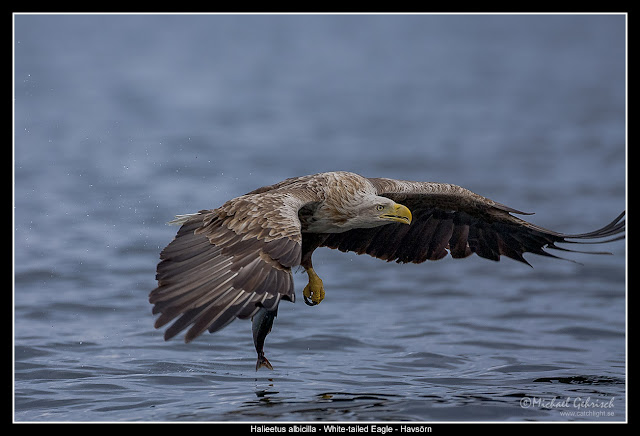June 5
Our Norwegian sea-eagle adventure began when Swedish bird photographer/bird watcher C.G. Gustavsson contacted me out of the blue back in November and asked if I would be interested in sharing the costs for a session with Norway's most famous eagle guide
Ole Martin Dahle. It took us about 3 seconds to make up our minds. So after seven long months of waiting Johan (12) and I touched down with SAS in Trondheim picked up our rental car and began the three hour drive north. This was somewhat of a budget arrangement, outside of the normal guiding season and schedule which meant we had budget accommodations as well. Ole-Martin made arrangements with a neighbor who had a rental flat that we could rent; a one bedroom flat with a kitchen, which was just fine with us.
So after getting settled in we made an early night of it and then were up at 6AM to meet Ole-Martin and head for his boat and to meet his good friends the sea-eagles.
Johan and I used the Canon 500/4IS and the 400/5.6, both work well from a distance, but for some of the closer shots a 300/2.8 would have been a better choice with the potential for shallower depth of field and wider field of view.
As you can see there were plenty of eagles, and they seemed to recognize Ole-Martin and his boat. But we also tossed bread to the seagulls on the way out to the eagles territory. The eagles are smart enough to understand that where there is a flock of seagulls there must be food. So from their vantage points several kilometers away they came to see what all the commotion was about.
This was Johan's first effort at serious in-flight photography, but he did brilliantly. You just can't deny that kids have much quicker reflexes than adults, I guess in part from all the computer games.
Later that evening Ole-Martin showed us some of the images made by previous visitors, among them a teenager whose image of a red squirrel placed in the BBC Wildlife Photographer of the Year contest. This became an inspiration for Johan who consequently placed twice in the Wildlife Photographer of the Year contest, first in 2008 and again in 2010 (
see separate post).





















